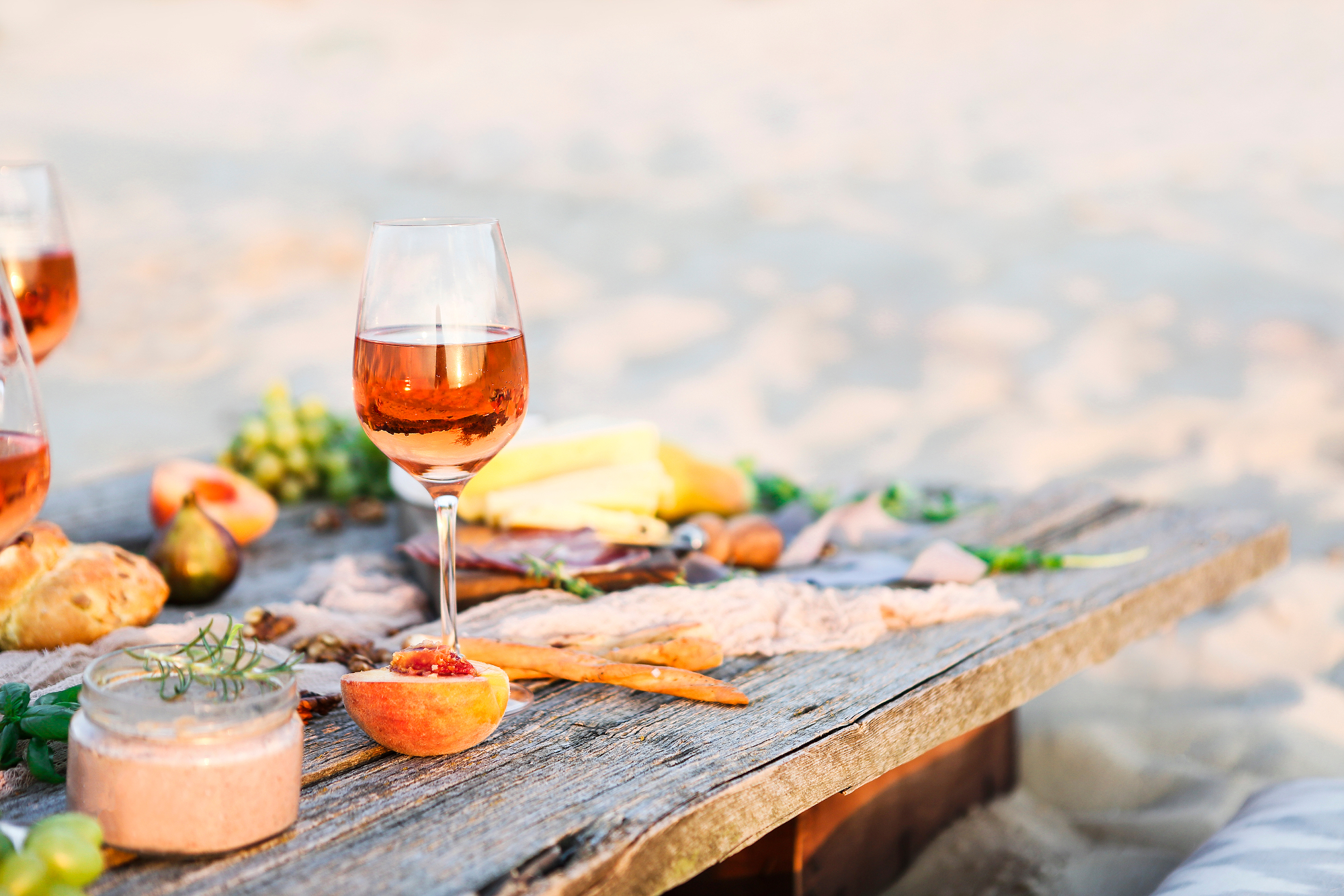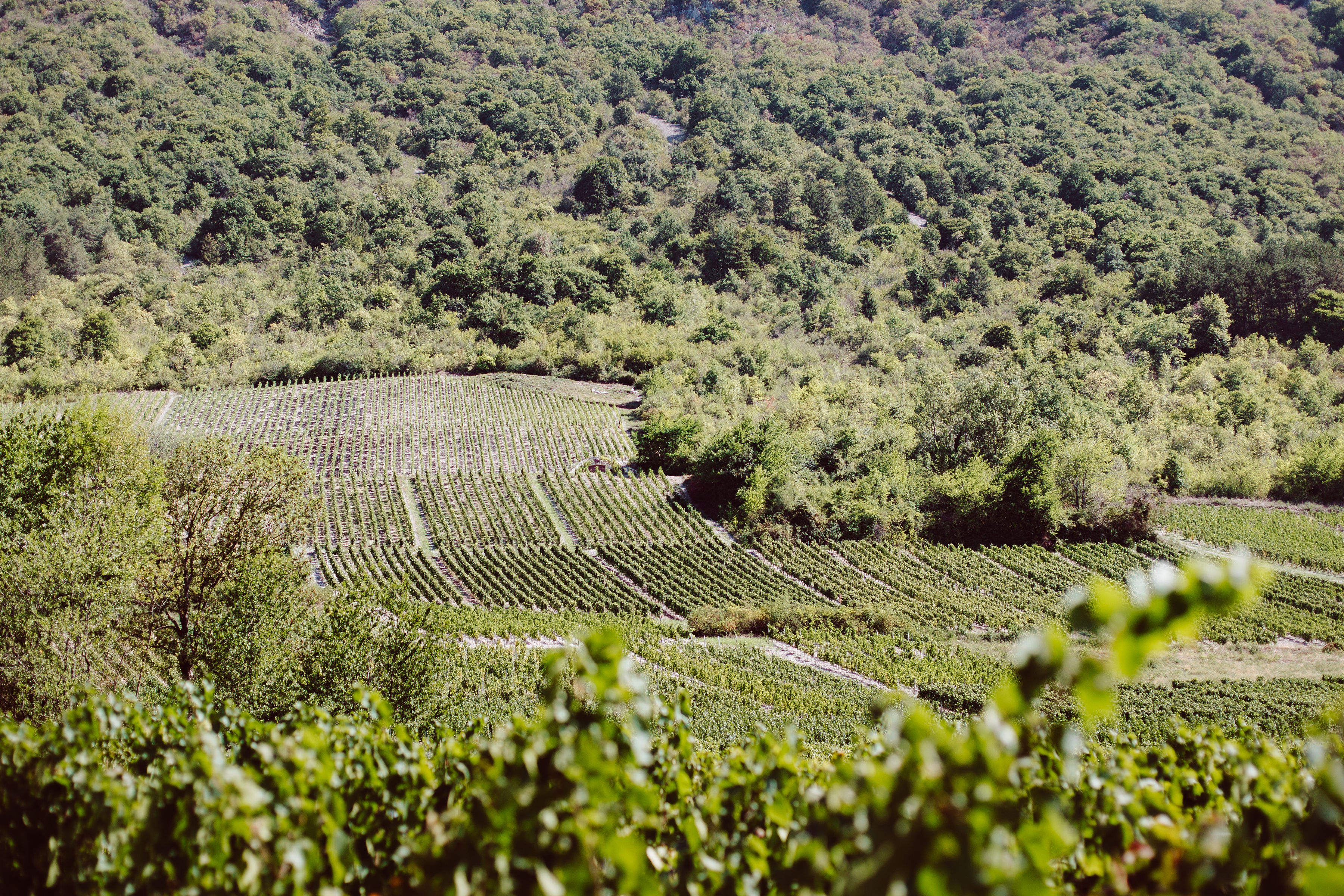Guillaume Quénard is now the leader of the estate. He is beginning to make his mark with more straightforward, fine wines of superb balance.
Thérèse and Michel Riouspeyrous, who are now quietly handing over the estate to their sons Iban and Théo, can be proud of their success on their family estate. They have become the reference for Basque wines and perhaps even for the whole of the South West.
Martin Bart delivers vintage after vintage of formidable Côtes de Nuits of great classicism, focused on the brilliance of their respective terroir.
<p style="text-align: left;">"Benoit Lahaye est l'un des vignerons les plus doués de sa génération. Installé sur Bouzy il est maintenant rejoint par ses fils Étienne et Valentin. Il possède ainsi 4,5 hectares de vignes conduites en briodynamie, avec l'aide de sa jument Tamise et du chien Bacchus.</p>
"Incarnant la 7e génération, le brillant Mathieu Roland-Billecart a repnis le flambeau de cette maison de Mareuil-sur-Aÿ, deux fois centenaire et toujours familiale depuis sa création en 1818.
Champagne Bollinger, a virtuoso of Champagne wines
Virginie and Laurent Vanpoperingh cultivate with passion 7 hectares in the areas of Damery and Cumières in the Marne Valley. The cuvées all have an elegant and fine profile and have the particularity of being aged entirely or partially in barrels.
The vineyard of the Charvin estate is mainly located on clay-limestone soils around Orange, 13 hectares in the Côtes du Rhône appellation and 8 in Châteauneuf-du-Pape.
Discover the Provencal nuggets of Raymond de Villeneuve. His vineyard is located near Roquefort-la-Bédoule at the foot of the Sainte-Baume Massif, with an organic culture and a real work of the soil (certified Ecocert in 2014). The wines are really captivating and of an excellent level, with digestible whites, chiselled rosés, and reds that are always concentrated, fine and perfumed. A gourmet and profound approach to be praised...
Château Simone, the paradise of the AOC white palette
Yves Canarelli never ceases to amaze us and continues to raise the profile of Corsican wines, unquestionably belonging to the elite of Mediterranean winegrowers.
"Nicolas Renaud était professeur d’histoire avant de devenir vigneron en 2007, en reprenant des vignes à Rochefort-du-Gard. À l'origine de cette passion, des visites dans ses jeunes années dans le vignoble et la mémoire d’un vin en particulier, et pas n’importe lequel : celui d'Henri Bonneau, célèbre producteur de Châteauneuf-du-Pape.
Bellet, a micro-appellation of about fifty hectares on the heights of Nice is really a discovery of great interest, in particular at Clos Saint-Vincent, which is now at the top of the appellation...
In the Taravo valley, not far from Propriano, the Comte Abbatucci estate continues to shine through its contribution to the revaluation of Corsican native grape varieties.
"Installée à Avize depuis trois générations, la famille De Sousa vient de célébrer ses 20 ans de biodynamie. En compagnie de son épouse Michelle et de ses trois enfants revenus au domaine, Erick poursuit sa quête de l'excellence dans cet esprit familial.
The rising star of Sancerre is now on the heels of the greatest...
It is on the atoll of Rangiroa in the Tuamotu archipelago, in the heart of the South Pacific, that Dominique Auroy's precious Vin de Tahiti is produced. White and rosé Tahitian wines, with a unique identity, freshness and remarkable aromas reminiscent of the local coral... An ultra original gift!
"À la tête ce domaine familial d'Ambonnay, Francis Egly est un conducteur de vignes et un vinificateur hors pair. Précurseur incontestable au sommet de la hiérarchie champenoise, il a su choisir les meilleurs gestes au vignoble et fait des choix d'élaboration très personnels.
Elio Sandri owns 8 hectares of vineyards in Piedmont at Monforte d'Alba on the famous Disa hill on blue marl soils. A magical terroir planted with Nebbiolo, Barbera and Dolcetto. The production of the estate is unfortunately limited, around 3500 bottles depending on the vintage and distribution in France is very rare... The vinification is very traditional, with the minimum of interventions, with macerations in concrete vats to bring out the fruit as much as possible. Fermentations are carried out with indigenous yeasts and the wine is aged for a very long time, at least 60 months for the Riserva vintage! Elio Sandri's Barolo wines are fascinating to taste, lovers of elegant and refined wines will be won over, black fruits, dried flowers and spices harmonise, great wines of terroir and emotion with an immense capacity for ageing, and at prices that are still very reasonable..
Freshness, fruit, complexity and a big favourite for the whole range!
"Fondrèche, ce domaine ambitieux des Côtes du Ventoux produit des vins riches, au fruit expressif, s’appuyant sur des élevages généreux en barriques ou en demi-muids. Les vins présentent un style moderne, la cuvée Persia apparaissant d’une grande densité avec des tanins mûrs. Si l’élevage domine sur quelques cuvées, la production est dans l’ensemble de haute volée." RVF Guide
At the foot of the Alpilles, the discreet Dominique Hauvette has risen over the years to become one of the elite of the great winegrowers of Provence, one of the most exciting estates of the moment for the discerning wine lover...
Cyril Fahl, largement reconnu comme l'un des viticulteurs français les plus talentueux de sa génération, est célèbre pour ses vins d'une finesse exceptionnelle. Basé à Latour-de-France dans le Roussillon, il excelle dans l'art de maîtriser des cépages tels que le carignan, le grenache et le macabeu, créant ainsi des vins d'une grande élégance et d'une belle complexité.
"Après la disparition de son père, figure charismatique du vignoble mondial, Jean-Philippe Blot reprend seul les rênes, aidé par une équipe technique et culturale soudée. De quoi assurer de la plus belle des façons la pérennité de ce domaine phare du vignoble français.
"Ici, c'est le royaume de Régine Sumeire, une femme au caractère bien trempé, qui se bat à juste titre pour la reconnaissance des grands rouges de Provence. Avec énergie, elle administre ce domaine très qualitatif de 89 hectares d'un seul tenant, situé sur le terroir de Pierrefeu.
"Julien Labet, with the help of his brother and sister, has taken over his father Alain's vineyards, which are now grouped together under a single entity: Domaine Labet. (...) Numerous micro-parcels (between 15 and 80 ares, often from old vines) are vinified by Julien, both in white (all ouillés) and in red, the latter being perhaps the most exceptional to be born today in the region. Sulphur levels are very low but the balance is impossible to fault in the wines. The estate is now one of the spearheads of the Jura revival." RVF Guide 2018
The Amoreau family has been cultivating its vineyards since 1610, located on a rocky plateau, identical to that of Saint-Emilion and Pomerol. The fifty year old vines are cultivated according to the biodynamic method, which contributes to the singularity of the estate and stands out among all the Bordeaux crus.
One of the great rising stars of the French wine industry...
Dans le Gard, des vins naturels émergent grâce au talent des jeunes vignerons Guillaume et Charles Soulier. Leur domaine, niché entre Avignon et Nîmes, a donné naissance à 10 000 bouteilles en 2015, comprenant du blanc, du rosé, du rouge, et une rare centaine de bouteilles de Carthagène pour exprimer pleinement le terroir.
"Vincent Goumard, venu du conseil financier, a repris avec son épouse Isabelle cette propriété de Jonquières, en Terrasses du Larzac, qui appartenait au père d'Olivier Jullien.
Costières de Nîmes with an amazing quality/price/pleasure ratio...
"Installé à Jonquières à l'ouest de Montpellier, Olivier Jullien, référence incontestée et incontestable, est parvenu avec intuition et intelligence à hisser au plus haut le niveau qualitatif des vins de la région et a entraîné derrière lui toute une génération de jeunes vignerons.
En 2007, Olivier Bardet a entrepris son parcours viticole en reprenant une exploitation de 2,5 hectares. Aujourd'hui, il dirige un vignoble de 5 hectares, situé autour du village de Mérignat, dédié exclusivement à une production : le Cerdon méthode ancestrale.
A very talented winemaker to discover first...
A must of the appellation with a natural Cerdon, greedy and complex at the same time. Ideal with a red fruit crumble.
A great reference in Cerdon du Bugey.
Installé à Tavel dans le Gard, Romain le Bars est un vigneron nature qui progresse de millésime en millésime et dont les vins sont déjà très recherchés. Il a eu le privilège de travailler près de 7 ans chez le grand et illustre voisin Eric Pfifferling, vigneron du domaine de l’Anglore. Après cette expérience, Romain Le Bars se lance en 2018 avec 1,20 hectares de vignes, et un tout petit chai dans son garage. Son vignoble est composé aujourd’hui d’une bonne dizaine d’hectares avec un chai un peu plus grand.
The ultimate reference of the Bandol appellation... or one of the most beautiful representations of the famous mourvèdre grape variety.
Jacques Seysses (Domaine Dujac) and Aubert De Villaine (Domaine de la Romanée Conti) joined forces with Michel Macux in 1990 and bought the property. Their know-how is now reflected in this Provence rosé with an exceptional quality-price-pleasure ratio.
"La Champagne a encore du mal avec le “bio” : 0,7 % du vignoble. Même si Vouette et Sorbée ne fait pas partie des “domaines historiques” de la biodynamie champenoise (tels Beaufort, Fleury, Bedel…), Bertrand Gautherot s’y adonne dans l’Aube dans la joie et la bonne humeur d’une ferme où il favorise la diversité du vivant." RVF Guide
"Voici encore un domaine de « femme corse » ! Muriel Giudicelli exploite avec autorité une propriété située au cœur du vignoble historique de Patrimonio, avec un pied dans l'aire d'appellation du Muscat du Cap Corse (son mari l'aide à la vigne depuis 2005).
"Un ermite guérisseur ayant choisi pour exercer son don ce site exceptionnel, à l'extrême nord de l'appellation, a inspiré le nom du domaine.
"On dénichera chez cet artisan engagé la plus intéressante déclinaison de rosé des Riceys et de coteaux-champenois (non filtré), vinifiés par lieu-dit : ils retrouvent la vivacité végétale et la finesse aromatique des pinots noirs septentrionaux, jadis largement produits dans la région.
"Aurélien Laherte dirige avec rigueur, talent et sensibilité ce petit domaine familial situé à Chavot, sur les coteaux sud d'Épernay. Le vignoble comprend des belles parcelles de craie affleurante sur ce village champenois mais s'étale également du côté du Breuil, de Boursault et de la Côte des Blancs.

